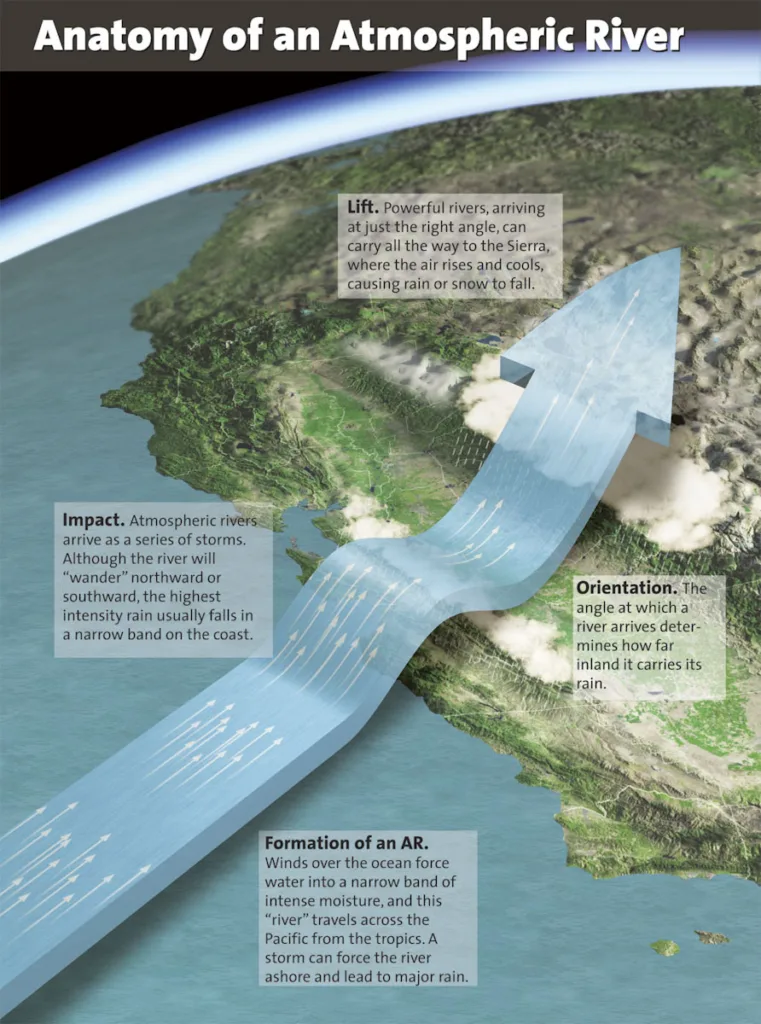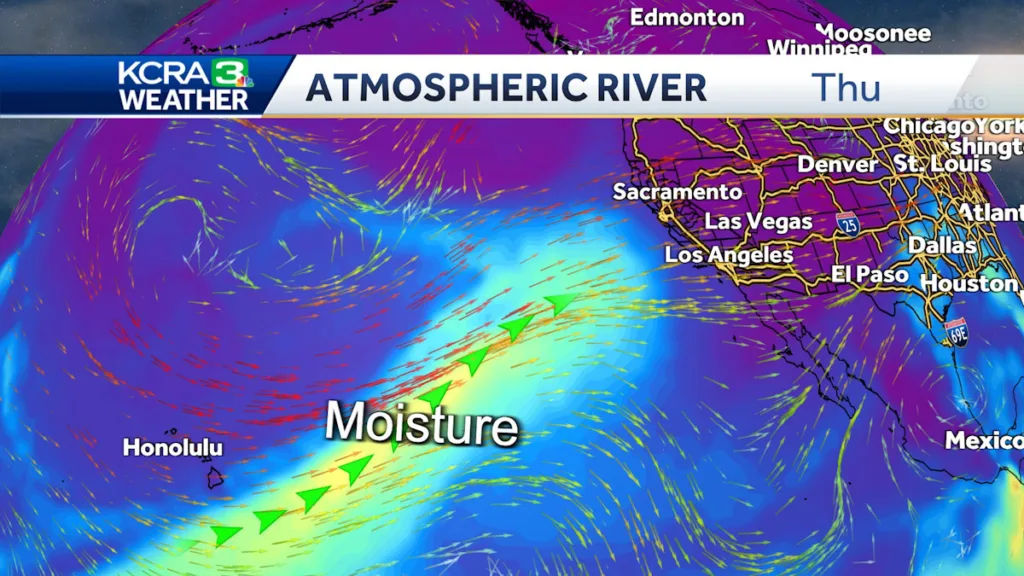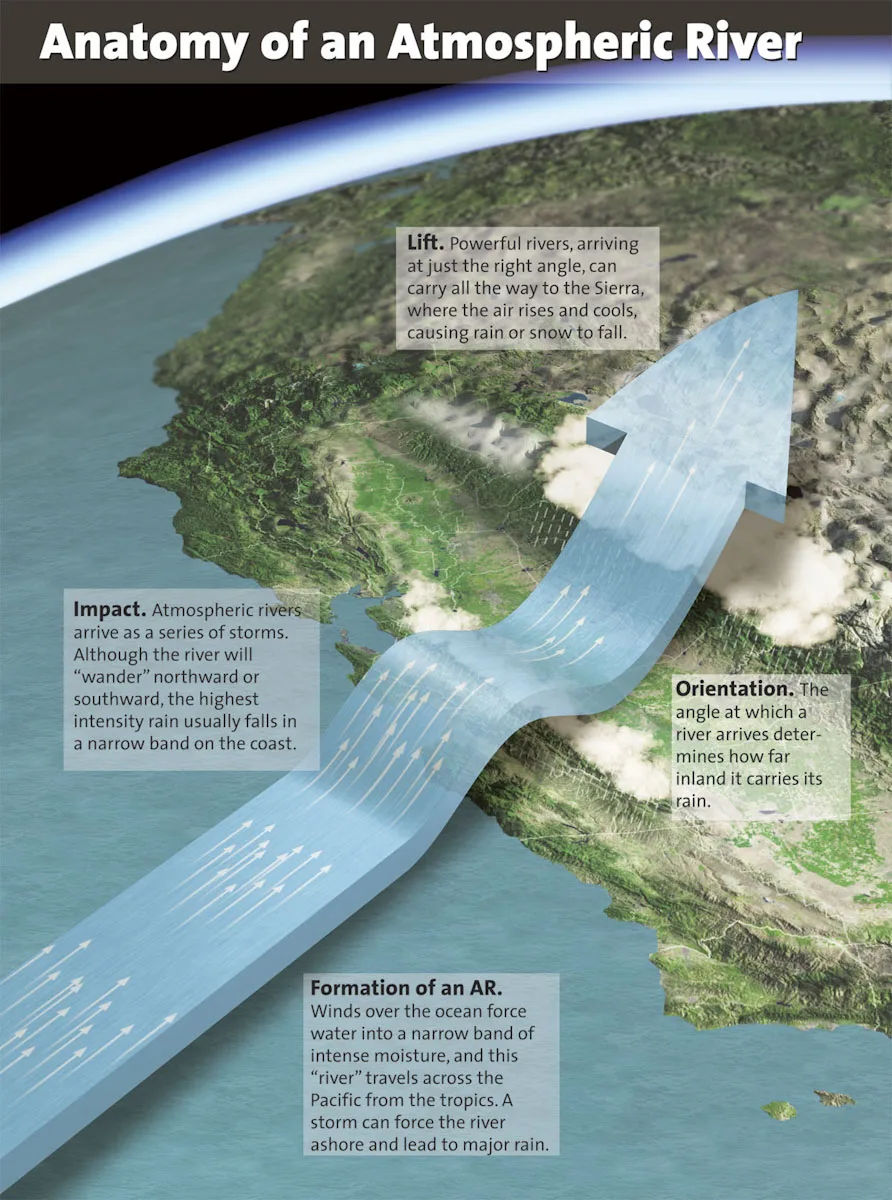Table of Contents
Introduction
In February 2024, California experienced a series of atmospheric rivers, bringing intense rainfall and widespread flooding across the region. These atmospheric phenomena, characterized by narrow bands of concentrated moisture, pose significant challenges to residents, infrastructure, and the environment. In this comprehensive guide, we delve into the intricacies of atmospheric rivers, examining their dynamics, impacts, and preparedness measures.
Understanding Atmospheric Rivers
Atmospheric rivers are long, narrow corridors of moisture in the atmosphere that transport vast amounts of water vapor from the tropics to higher latitudes. These phenomena can extend for thousands of kilometers and are capable of delivering heavy precipitation when they make landfall. In February 2024, California experienced several atmospheric river events, resulting in record-breaking rainfall and flooding.

Impacts on California
The February 2024 atmospheric rivers had significant impacts on California, affecting everything from water supply and agriculture to transportation and public safety. Coastal areas experienced inundation from storm surges and high tides, while inland regions faced flash floods and landslides. The resulting damage to infrastructure and property underscored the vulnerability of California to extreme weather events.
A Wave of Natural Disasters
In the early months of 2023, a relentless barrage of storms unleashed unprecedented levels of rainfall and snowfall across California. The aftermath was devastating, with widespread flooding, power outages, and mudslides wreaking havoc on communities throughout the state. Tragically, the onslaught claimed the lives of 21 individuals and inflicted over $3 billion in economic losses.
Unraveling the Cause
The genesis of this catastrophe lay in the atmospheric phenomena known as “atmospheric rivers,” streams of moisture-laden air that traversed the skies above California in succession. Over a span of three weeks, a total of nine atmospheric rivers made landfall in California, beginning on December 26, 2022, and persisting until January 17, 2023. Recent studies conducted by Stanford University shed light on the alarming trend of consecutive atmospheric rivers, a trend exacerbated by the effects of climate change, which have led to increasingly severe consequences.
The Ominous Significance
These findings underscore the critical need for proactive measures to mitigate the impact of atmospheric rivers and bolster resilience in the face of escalating climate challenges. As the frequency and intensity of such events continue to rise, it is imperative that policymakers, communities, and individuals alike prioritize strategies for adaptation and preparedness. By understanding the mechanisms driving these phenomena and embracing forward-thinking solutions, we can strive to safeguard lives, property, and the environment from the ravages of future storms.
Forecasting and Preparedness
Advanced Forecasting Techniques
Meteorologists use sophisticated models and technologies to forecast the onset and intensity of atmospheric river events. By analyzing atmospheric patterns, sea surface temperatures, and other variables, forecasters can provide early warnings and guidance to emergency responders and the public.
Community Preparedness
Preparedness measures play a crucial role in mitigating the impacts of atmospheric rivers. Communities are encouraged to develop emergency plans, stockpile supplies, and heed evacuation orders when necessary. Public awareness campaigns and outreach efforts aim to educate residents about the risks associated with atmospheric rivers and empower them to take proactive measures to protect themselves and their property.

FAQs:
- What are atmospheric rivers? Atmospheric rivers are narrow bands of concentrated moisture in the atmosphere that transport large amounts of water vapor from the tropics to higher latitudes.
- How do atmospheric rivers impact California? Atmospheric rivers can bring heavy rainfall, flooding, and landslides to California, resulting in damage to infrastructure and property.
- How are atmospheric rivers forecasted? Meteorologists use advanced modeling techniques and monitoring technologies to forecast the onset and intensity of atmospheric river events, providing early warnings to communities.
- What measures can communities take to prepare for atmospheric rivers? Communities can develop emergency plans, stockpile supplies, and educate residents about the risks associated with atmospheric rivers to enhance preparedness and resilience.
- Are atmospheric rivers a natural phenomenon? Yes, atmospheric rivers are a natural phenomenon driven by atmospheric circulation patterns and temperature gradients.
- What role do atmospheric rivers play in the water cycle? Atmospheric rivers play a crucial role in transporting moisture from the tropics to higher latitudes, contributing to precipitation and the replenishment of water resources.
Conclusion
As California continues to grapple with the impacts of atmospheric rivers, it is essential for residents, policymakers, and stakeholders to work together to enhance preparedness and resilience. By understanding the dynamics of atmospheric rivers and taking proactive measures, we can mitigate the risks associated with these powerful weather events and build a more resilient future.
For Additional resource read here
Do Follow here for more top stories.


2 thoughts on “February 2024 California Atmospheric Rivers: Exploring Nature’s Fury”